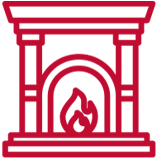Chimney liners are the unsung heroes of your entire fireplace system.
The simple lining system, which runs the length of your fireplace from the firebox to the chimney cap, plays several important roles, including protecting your masonry chimney from damage.
Unfortunately, most homeowners overlook the importance of a properly maintained liner and only notice the signs of a problem once it is too late.
Here is the definitive guide to your fireplace’s chimney liners, including signs of potential problems and what could occur if you skip your annual Chimney Maintenance.

What Exactly Are Chimney Liners?
As the name suggests, the liner is attached to the chimney’s inner walls and protects the masonry from the heat and smoke produced by the burning wood.
Additionally, liners can help prolong the life of your chimney while preventing corrosion.
Chimney liners are sometimes called chimney flue liner, but whatever you call it, the purpose of static or flexible chimney liners is to help direct heat and smoke out of the house while protecting masonry chimneys.
Wood-burning stoves and other types of wood-burning appliances feature a metal pipe that vents smoke out of your home. A pellet stove does also not feature a chimney liner.
Most gas fireplaces do not produce smoke through the combustion of any fuel types, so they do not feature chimneys or chimney liners.
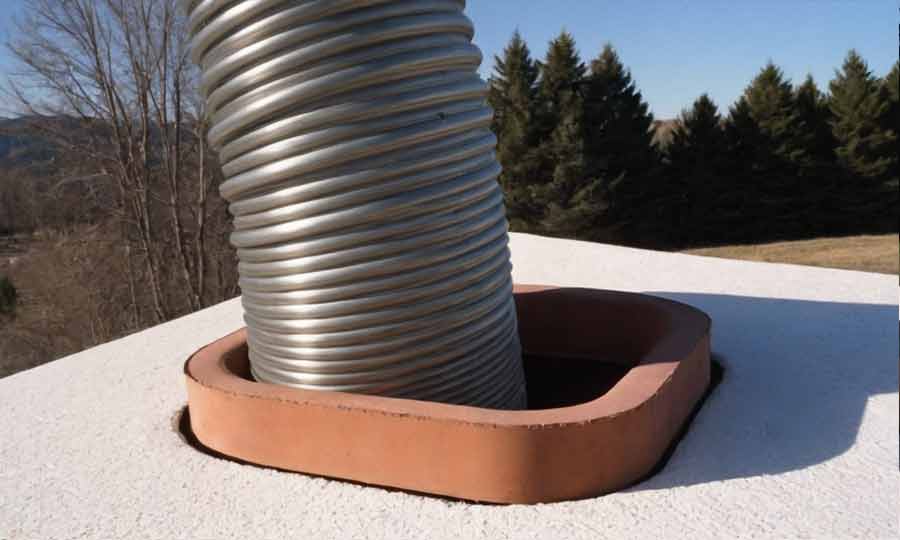
Different Types of Chimney Liners
If you own a wood-burning fireplace in Colorado, the chimney will feature one of three types of liners: A stainless steel chimney liner, a cast-in-place liner, or a clay liner.
No matter what type of liner, scheduling an annual Thorough Chimney Cleaning is critical for optimum efficiency.
Stainless Steel Chimney Liners
Flexible chimney liners are the best option if you want a new liner installed in existing chimneys.
These flexible liners are typically made from stainless steel and can be easily used in conjunction with a cast-in-place or clay liner.
Some flexible chimney liners, including those installed on gas fireplace chimneys, are often made of aluminum.
These liners are installed quickly, help prevent damage, and can easily be replaced if severely damaged.

Cast-in-Place Liners
A more expensive and permanent solution, cast-in-place liner installation, involves pouring a cement-like product down the masonry chimney.
Once the product dries, it is highly durable, and because you are essentially adding a second layer of masonry, cast-in-place liners improve your chimney’s structural integrity.
These liners are rated for fires that burn up to 2100 degrees Fahrenheit.
Because such high temperatures are supported, homeowners can enjoy the added benefit of less creosote buildup and, in turn, a smaller chance of carbon monoxide leaks.
The biggest downside is that because these liners are permanent, the entire unit must be ripped out and replaced once any damage or cracking occurs.
Clay Liners
One of the most commonly used products, clay tile liners, are often found in older homes, especially those built 50 years ago or later.
These tiles are inexpensive and durable; individual tiles can last for decades when properly maintained.
Burning green wood or prolonged exposure to uneven heat can cause cracking. This cracking needs to be repaired immediately, which involves the replacement of individual tiles.
If you have a clay liner, contact the pros at the Chimney Kings to schedule an annual Chimney Sweep and emergency Fireplace Repairs at the first sign of cracking or damage.

The Dangers of DIY Chimney Liner Kits
Your chimney liner is getting old or damaged, and you are considering purchasing a DIY chimney liner kit.
These kits are inexpensive, and installing them is relatively easy, but there are several downsides you should consider.
Store-bought kits are not as sturdy and do not provide as much protection.
If installed improperly, you leave your home and family vulnerable to a potential fire.
Instead, contact our team for an Efficient Chimney Repair and chimney liner replacement.
Functions of Chimney Liners: Advantages of Functional Liners
Whether you prefer the convenience of a flexible liner or the stability of clay liners, you must ensure that if you have a wood-burning fireplace, your chimney liner is functional and free of damage and defects.
Here are a few of the many advantages of a fully functional chimney liner:

Lower the Risk of Accidental Fire
Your chimney is designed to prevent fires, but it doesn’t mean accidents don’t happen.
A well-maintained liner is an extra layer of protection against fire because it helps limit any heat transfer, preventing anything near the fireplace from also catching on fire.
No matter what Chimney Lining Options you choose, proper maintenance is critical to prevent house fires.
Prevent Unnecessary Masonry Damage
One of the most significant benefits of any type of liner is that the masonry used to construct the chimney is protected from extreme heat and temperature variations.
With the proper care, including watching out for Signs for Chimney Repairs, a lined masonry chimney can last a lifetime.

Ensure the Functionality of Your New Fireplace
Your new wood-burning fireplace or fireplace insert is finally complete, and you are ready to start your first fire!
Before you light the match, make sure that you contact a pro for a Comprehensive Chimney Inspection and have a chimney liner installed.
The liner will increase your beautiful new fireplace’s functionality, safety, and efficiency.
Signs of Damage to Cast-in-Place, Clay and Stainless-Steel Liners
From exposure to extreme temperatures to moisture accumulation and mold growth, even well-installed, well-maintained chimney liners can suffer damage.
Watch out for these signs of damage, and if you notice any, Contact Us immediately for a Denver Chimney Inspection:

Visible Cracks and Moisture Stains
Look for visible cracks on your cast-in-place or clay tile liner. For stainless steel chimney liners, look for corrosion or warping.
Often, severe cracks caused by moisture damage are accompanied by water stains on the ceiling, particularly near the fireplace.
A great way to prevent any type of damage is to pay for the installation of a Durable Chimney Cap, or rain cap, which helps stop rain and snow from dripping into the chimney.
Excessive Creosote Buildup
Creosote is a natural by-product of burning any type of wood, especially green or unseasoned wood.
Excessive creosote buildup not only increases the chances of an unexpected house fire but can also damage your liner.
Prevent creosote accumulation, and learn how to properly care for your fireplace and chimney by reading this Fireplace Safety Guide and blog about Buying the Right Wood for Your Fireplace.

Watch for Serious Corrosion
No matter what type of liner is present, constant exposure to moisture and extreme temperature variations leave the unit vulnerable to corrosion.
Contact a pro at the first sign of corrosion because it is often a sign of another underlying severe issue, such as a chimney leak.
The Dangers of Damaged Chimney Liners
Your chimney liner is showing early signs of wear and tear.
Still, you assume that because the damage is minimal or isolated, you can put off a professional repair until the destruction is more widespread.
Even a tiny crack or minor damage can place your family at serious risk. Here are some of the dangers associated with damaged chimney liners:
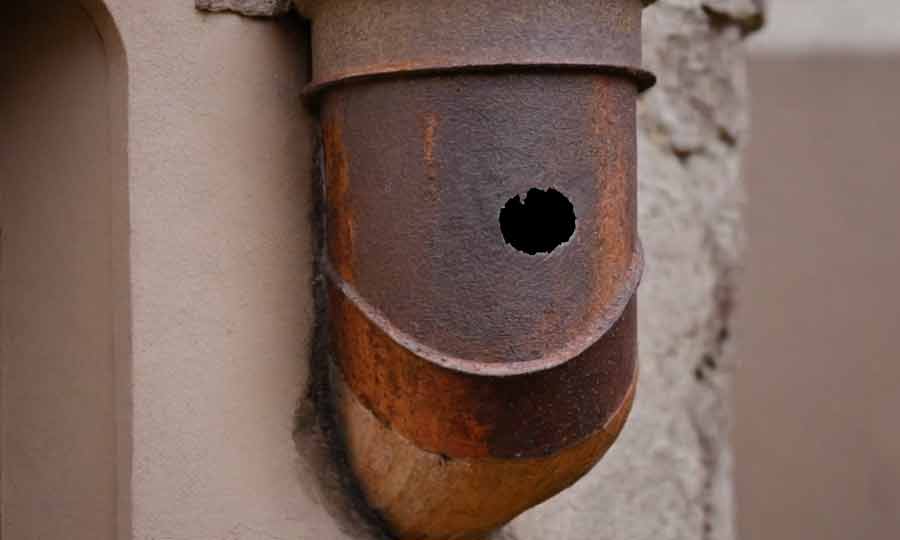
Improper Ventilation
A functional liner will help improve your chimney’s ventilation. A damaged liner will have the opposite effect.
To ensure your chimney liner is functional and your family is safe, have minor damage repaired ASAP and follow these other Chimney Safety Tips.
Increased Risk of House Fires
Well-maintained liners add an additional layer of protection against house fires.
Allowing the liner to degrade beyond the point of repair can not only take away this extra protection but also increase your risk of an accidental house fire.
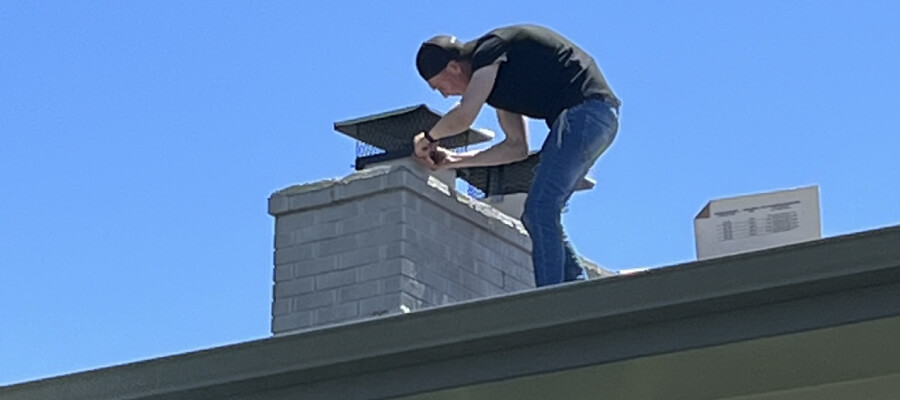
Protect Your Home and Family with Regular Chimney and Fireplace Maintenance
Proper care and maintenance of your Colorado fireplace don’t have to be stressful or break the bank.
The team at the Chimney Kings is your premier chimney maintenance and repair experts.
With years of experience serving the amazing people of the greater Denver metro area, our team of talented experts has the tools, equipment, and know-how necessary to keep your home fires burning.
From Brick Tuckpointing and roof repair to annual inspections, chimney sweeping, and Chimney Crown Installation, we provide various services guaranteed to meet all your needs.
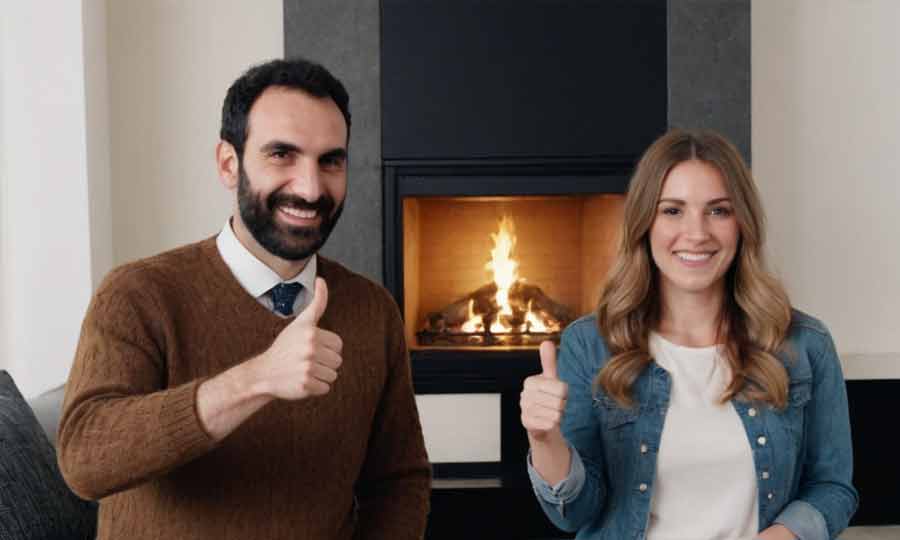
Our Customers Also Ask
What is the best type of chimney liner?
Each type of chimney liner has its pros and cons. For example, flexible chimney liners are easy to install but don’t offer as much protection and support as a cast-in-place liner.
Clay liners increase your chimney’s stability but are vulnerable to water damage and corrosion.
If you cannot decide, the pros at the Chimney Kings can discuss the ins and outs of all three main options, metal, cast-in-place, and clay tiles, to help you determine which liner best meets your needs and budget.
Can I install my own chimney liner?
The potential cost-savings of installing a chimney liner kit are tempting, but this DIY solution has too many dangers.
For example, an improperly installed chimney liner increases your risk of an accidental house fire.
It will only last for a few years rather than several decades, the average lifespan of a professionally installed liner, leaving the chimney vulnerable to preventable damage.
Instead, work with the pros at the Chimney Kings. If you have any other questions or issues, including clogged dryer vents, or need assistance with Removing Animals Out of a Chimney, we can help you with that too!








